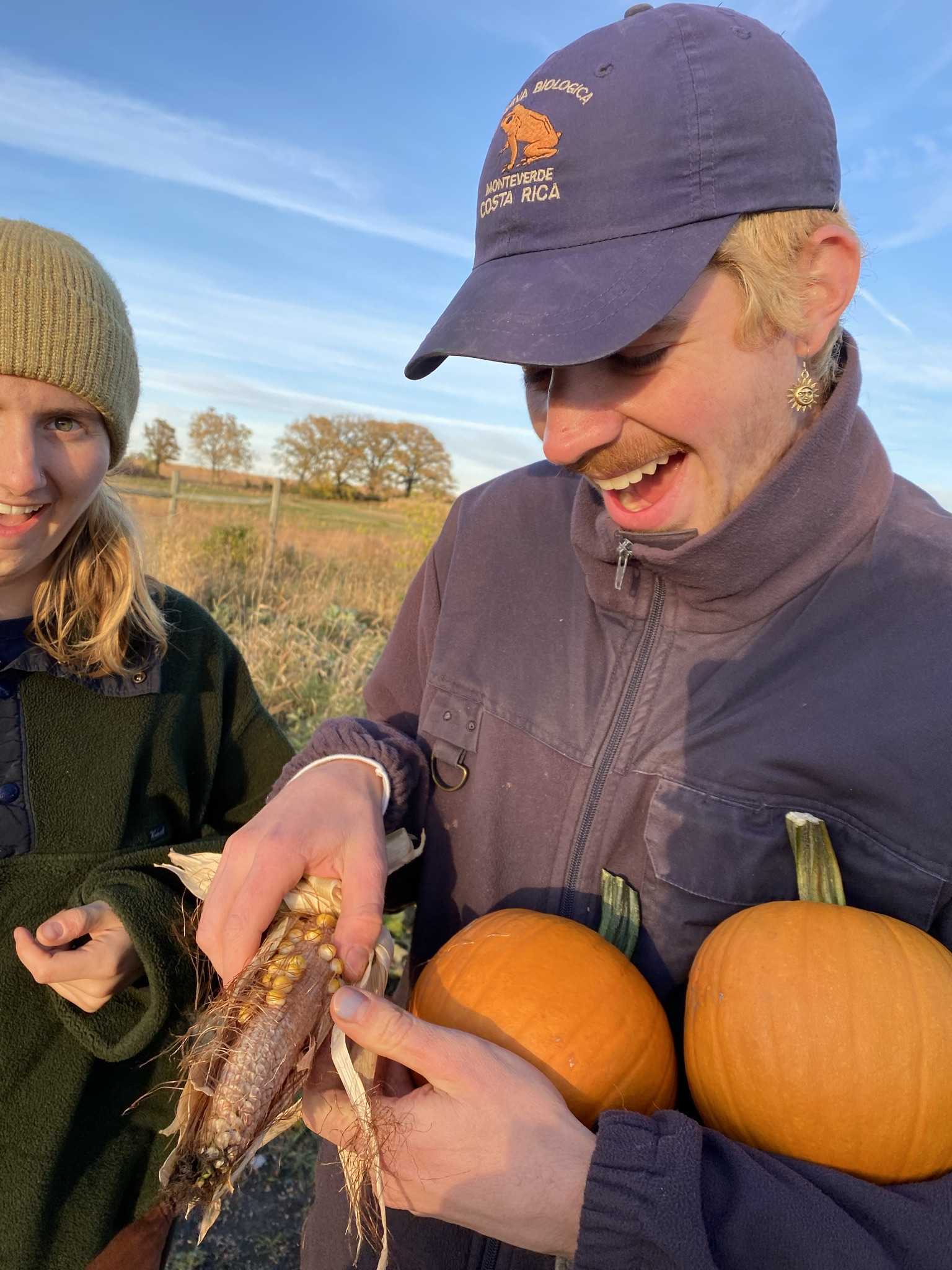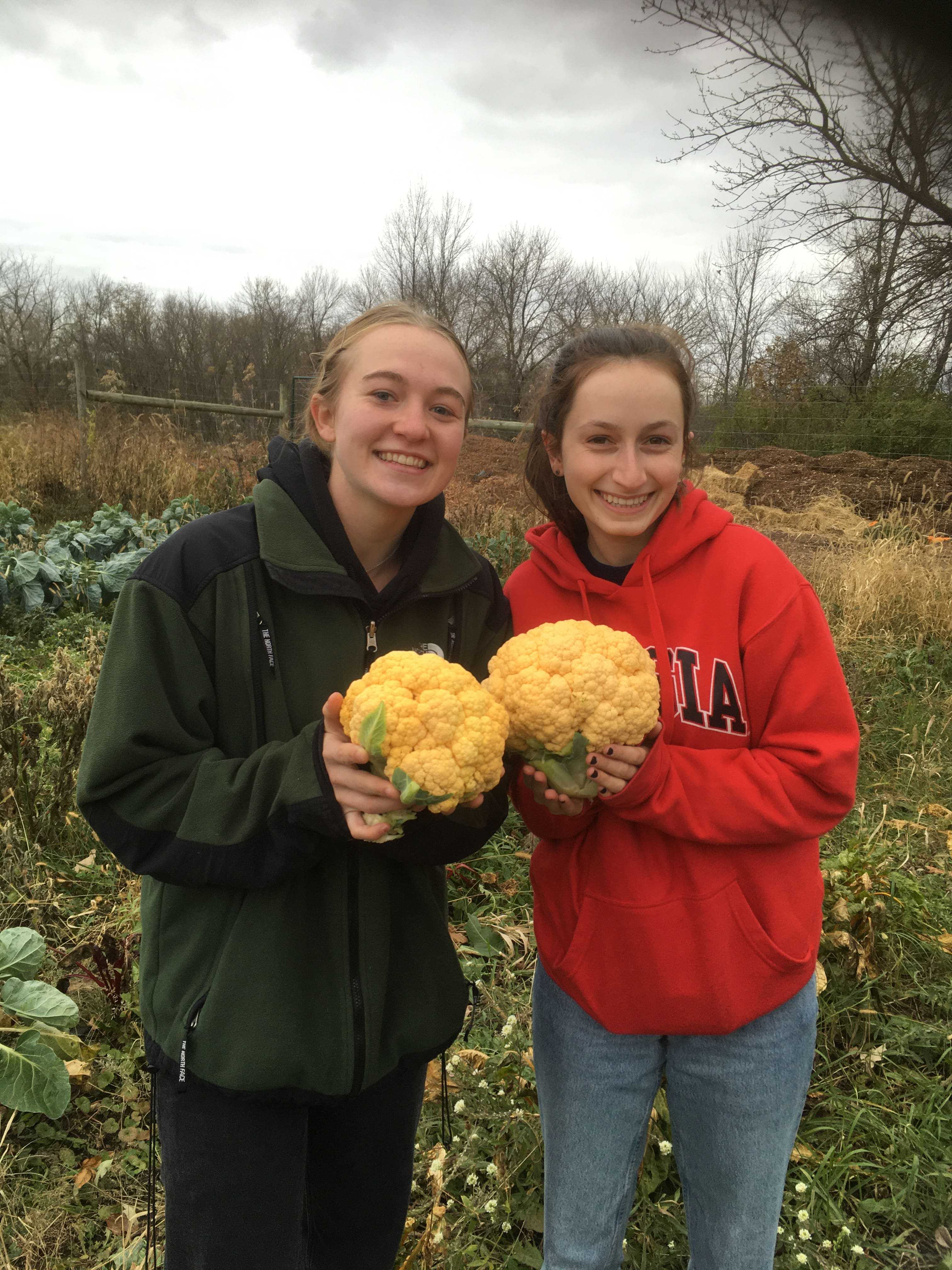

After a long, grueling spring and summer of farming, Jack Frost finally exhaled here in Northfield, Minn. In Northfield, the first frost typically occurs during the first week of October, but it appeared late this year, on October 21. The first frost may mean the beginning of a long and cold winter for most people, but it holds a deeper meaning for farmers, gardeners and planters of any kind. For the Carleton Farm—as stipulated by Eunice Gao ’24, one of three farm interns who spent her summer sowing Carleton’s fields — “first frost signals the end of a big harvest season.”
Senior lecturer in Biology David Hougen-Eitzman detailed the process of this visually appealing natural phenomenon: “the formation of frost itself occurs when dew, which is water that condensed out of the air, freezes. As the air cools, it holds less water. So, as temperatures cool at night, the water in the air condenses as dew on the surfaces of the ground, plant leaves, car windows, etc. If the temperature at the surface of the dew goes below freezing, then dew freezes and turns to frost.”
The first frost doesn’t just present itself when the temperature reaches freezing. The size of the city or town you are in, the topography of the area and the amount of cloud cover all play a role. Hougen-Eitzman described the weight of these variables: “Cities and towns usually have warmer temperatures than outlying areas (suburbs or rural areas). This is mostly because cities and towns have lots of buildings and asphalt roads and parking lots that can absorb energy during the day and radiate this heat during the night.” He notes that on the farm he lives on only 12 miles outside of Northfield, temperatures are usually four to five degrees cooler, and the first frost typically materializes earlier.
As for topography, cold air is heavier than warmer air, so cold air will flow downhill. As a result, the cold will pool at the bottom of a hill in a depression. Lower areas may experience lower temperatures and an earlier first frost than spots higher on a slope or hill. Barriers of trees or shrubs can impede this flow of cold air. Finally, the arrival of frost requires a clear sky. Hougen-Eitzman states that, “This is because cloud cover affects temperature. Clouds can reflect infra-red heat waves back to the surface of the earth, so a cloudy night in fall would be expected to be warmer than a clear night.”
A testament to the markedness of first frost to farmers, Gao noted that they “started planning around an estimated frost date back in spring, when we were mapping out a planting and harvesting timeline.” The ever-looming first frost is something that must be taken into consideration far in advance for farmers—before they even begin to plant.
Because of the early anticipation of the first frost, by the time the first frost hit Northfield two weeks ago, most crops had already been harvested. If they hadn’t been, the low temperatures preceding the first frost would have killed what was still there. At the Carleton Farm, tomatoes, eggplant, peppers and squashes had already been pulled from the earth. However, Gao added that “hardy crops such as those in the brassica group (kale, cabbage, broccoli, brussels sprouts, etc) root vegetables and legumes could continue growing after the first frost but wouldn’t survive in much colder weather.”
Just as the first frost means something to Carleton’s own farmers, it means something different to the farmers in Northfield and Southern Minnesota at large. Hougen-Eitzman detailed what the late advent of frost meant for farmers of soybeans and corn— the predominant field crops in the region: “By the time October arrives, these two crops are usually almost mature and the developing seeds cannot be damaged by a frost. The soybean plants (and sometimes corn) are still somewhat green by October and a frost will ‘kill’ this green tissue and make the crop easier to harvest. So a first frost at the ‘normal’ time is appreciated by corn, soybean and grain farmers. The first frost was somewhat late this year so grain farmers were complaining to me about the soybean harvest. Sometimes farmers talk about a ‘mild frost,”’which might show some frost on the grass, and a ‘killing frost,’ where temperatures are low enough to kill lots of kinds of plants.”
Now that the first frost has come and gone, all crops have been harvested and farming season has come to a close. But frost is not content to have only one noteworthy event a year. “The last frost in the spring is also an important time for farmers and gardeners. Once the average last spring frost has occurred, gardeners can put tender vegetable plants into the garden!” Houfen-Eitzman added.











